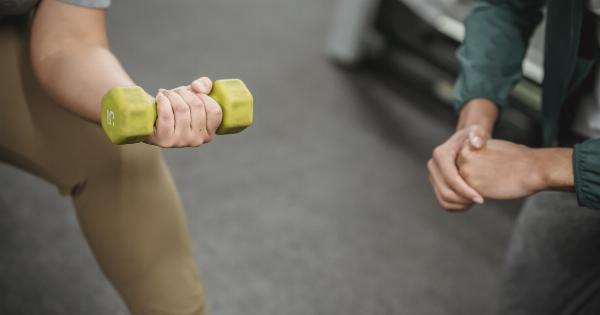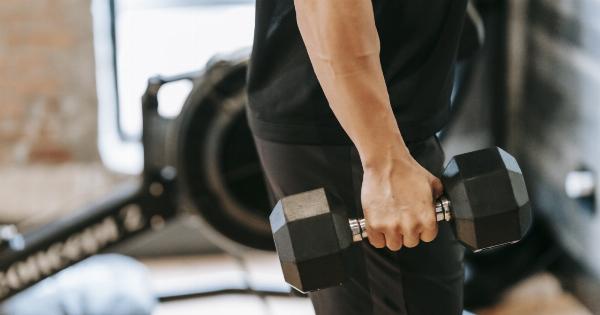Incontinence is a common condition that affects millions of people around the world. It can be embarrassing and disruptive, but the good news is that there are exercises and techniques that can help improve or even eliminate incontinence symptoms.
While Kegel exercises are well-known for their effectiveness in strengthening the pelvic floor muscles, there are other exercises beyond Kegels that can also provide relief. In this ultimate guide, we will explore a variety of exercises and techniques to help you manage and overcome incontinence.
Understanding Incontinence
Before we delve into the exercises, it is important to have a basic understanding of incontinence. Incontinence refers to the involuntary loss of urine or feces due to weakened or dysfunctional pelvic floor muscles.
This can occur due to various factors such as pregnancy, childbirth, aging, obesity, certain medical conditions, and even certain medications.
There are different types of incontinence, including stress incontinence, urge incontinence, overflow incontinence, and functional incontinence. Each type has its own underlying causes and requires a tailored approach to treatment.
The Importance of Pelvic Floor Muscles
The pelvic floor muscles play a crucial role in maintaining bladder and bowel control. These muscles form a hammock-like structure that supports the pelvic organs, including the bladder, uterus, and rectum.
When the pelvic floor muscles are weak or damaged, it can result in leakage or even complete loss of control over urination or bowel movements.
Exercising and strengthening the pelvic floor muscles can significantly improve bladder and bowel control, reduce incontinence episodes, and enhance overall pelvic health.
Kegel Exercises: The Basics
Kegel exercises are named after Dr. Arnold Kegel, who first introduced these exercises in the 1940s. Kegels are designed to target and strengthen the pelvic floor muscles.
They involve contracting and relaxing the muscles that you would use to stop the flow of urine.
Here’s how to perform Kegel exercises:.
- Identify the pelvic floor muscles: To find the correct muscles, try stopping the flow of urine midstream. The muscles used to do this are your pelvic floor muscles.
- Empty your bladder: Before starting the exercises, make sure your bladder is empty to prevent any discomfort.
- Contract the muscles: Squeeze the pelvic floor muscles, pulling them inward and upward. Hold the contraction for a count of three to five seconds.
- Relax the muscles: Release the contraction and allow the muscles to relax for a count of three to five seconds.
- Repeat and increase repetitions: Start with 10 repetitions, three times a day. As the muscles get stronger, gradually increase the number of repetitions to about 20 or more per session.
It is important to note that while performing Kegels, it is essential to isolate and contract only the pelvic floor muscles without tensing the abdomen, buttocks, or thighs.
Beyond Kegels: Additional Incontinence Exercises
While Kegel exercises are an excellent starting point, there are additional exercises and techniques that can be incorporated into your routine to further improve bladder and bowel control.
1. Squats
Squats are a great exercise for strengthening the pelvic floor muscles along with the glutes, hamstrings, and quadriceps. To perform a squat:.
- Stand with your feet shoulder-width apart.
- Slowly lower your body into a squatting position while keeping your back straight and your knees aligned with your toes.
- Hold the squat for a few seconds.
- Rise back up to the starting position.
- Repeat for 10-15 repetitions.
2. Bridges
Bridges target the glutes and the pelvic floor muscles. To perform a bridge:.
- Lie on your back with your knees bent and feet flat on the floor.
- Engage your core muscles and slowly lift your hips off the floor while squeezing your glutes.
- Hold the bridge position for a few seconds.
- Lower your hips back down to the starting position.
- Repeat for 10-15 repetitions.
3. Pilates
Pilates is a low-impact exercise method that focuses on core strength and stability. Many Pilates exercises engage the pelvic floor muscles, making it an excellent addition to an incontinence exercise regimen.
Consider enrolling in a Pilates class or following online tutorials to learn the various exercises and techniques.
4. Flutter Kicks
Flutter kicks target the lower abdominal muscles and the pelvic floor. To perform flutter kicks:.
- Lie on your back with your legs extended out straight.
- Engage your core and lift your heels a few inches off the ground.
- Alternate lifting one leg slightly higher than the other in a quick and controlled fluttering motion.
- Continue for 30 seconds to 1 minute.
5. Yoga
Yoga is known for its ability to improve flexibility, balance, and strength. Many yoga poses and sequences engage the pelvic floor muscles, promoting better bladder and bowel control.
Consider attending a yoga class or following online tutorials specifically designed for pelvic health.
6. Breathing Exercises
Deep diaphragmatic breathing exercises can help strengthen the pelvic floor muscles indirectly. When you take deep breaths and engage your diaphragm, it causes the pelvic floor muscles to naturally contract and relax.
Practice deep breathing exercises regularly to enhance overall pelvic floor strength.
7. Biofeedback Training
Biofeedback is a technique that uses electronic devices or special sensors to provide visual or auditory feedback about specific physiological processes in your body.
Biofeedback training can be helpful in identifying and strengthening the correct muscles involved in bladder and bowel control. Consult with a healthcare professional or physical therapist to explore biofeedback training options.
8. Functional Training
Functional training involves performing exercises that mimic real-life movements and activities.
By incorporating functional training exercises into your routine, you can train your pelvic floor muscles to work effectively during daily activities and prevent leakage. Some examples of functional training exercises include lunges, step-ups, and squats with overhead presses.
9. Weighted Exercises
Adding weights to your exercise routine can increase the challenge and effectiveness of the exercises. Consider using resistance bands or small weights while performing pelvic floor exercises, squats, or bridges.
Start with light weights and gradually increase as your muscles become stronger.
10. Core Strengthening
A strong core can provide better support for the pelvic floor muscles. Incorporate exercises that target the abdominal muscles, such as planks, Russian twists, and crunches, into your routine to enhance overall core strength.
Conclusion
Incontinence is a common condition that can significantly impact one’s quality of life.
While Kegel exercises are effective in strengthening the pelvic floor muscles, there are various additional exercises and techniques that can complement and enhance their benefits. By incorporating a variety of exercises into a well-rounded incontinence exercise regimen, you can improve bladder and bowel control, reduce incontinence episodes, and regain confidence and freedom in your daily life.





























